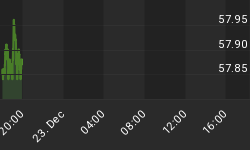Note: What follows was a post on the longwave discussion list made on August 25, 2002. It is based on a presentation I made to a Kalamazoo area investor's club on October 9th.
This post examines three S&P500 valuation methods for what they have to say about the progress of the current secular bear market. The first method that used by Robert Shiller in his book Irrational Exuberance: the index price divided by the average index earnings over the previous 10 years. The second method is Tobin's Q, discussed in Smithers and Wright's book Valuing Wall Street: market capitalization divided by net worth. Finally I look at P/R, which I discussed in my book Stock Cycles: constant-dollar index price divided by the sum of constant-dollar index earnings minus dividends.
This figure shows a graph of Shiller's P/E for the secular bear market that began in March 2000 versus that for four previous secular bear markets: 1881-96, 1906-21, 1929-49 and 1966-82. Several things are evident. First is the value of P/E at the beginning of the current secular bear market was much higher than that at the beginning of the previous bear markets. Indeed, Shiller's P/E had reached a level higher than any of its previous values in the first quarter of 1997. It was this development that led to Chairman Greenspan's "Irrational Exuberance" warning in December 1996. Since its 2000 peak P/E has fallen dramatically, but it is still well above the levels it has seen at this stage in previous secular bear markets. The S&P500 would have to fall into the 400's for P/E to be within the historical range. Thus, advocates of this valuation method recommended exiting the stock market in 1997, and would caution against re-entry until after another 50% drop from current levels.
This figure shows a graph of Tobin's Q for the current secular bear market and three previous ones. Similar observations can be made. As with P/E the level of Q reached in 2000 was way above any of its previous levels, but not quite as extreme as with P/E. All-time high levels of Q were reached in the third quarter of 1997. Since its 2000 high, Q has also fallen dramatically. Like P/E it too is fairly high relative to its historical values in early stage secular bear markets. The S&P500 would have to fall to the 600's for Q to be in its historical range. Thus, advocates of Tobin's Q would have recommended exiting stocks in late 1997 or early 1998, and would caution against re-entry until after about a one-third drop from current levels.
This figure shows a graph of P/R for the current secular bear market and the four previous ones. Like P/E and Q, P/R in 2000 was higher than it had ever been. But the margin of excess was less. P/R only reached an all-time high in 1999. Since its 2000 high, P/R has fallen like the other two measures. Unlike the other two, P/R is currently not particularly high relative it its historical values in previous secular bear markets. It is not low either. Thus, although the index certainly could continue to fall, and P/R would remain within its historical norms, it does not have too. Thus, advocates of P/R would have recommended exiting stocks in 1999, and would not caution against re-entry during the recent declines.
The current market provides a good test of the three valuation methods. Suppose the July 23 low ends up being THE bottom? (Note: since this post was written the S&P500 set a new low on October 9, 2.5% below the July 23 low.) This would invalidate Shiller's P/E and probably also Tobin's Q as useful valuation tools. Only P/R would have given a valid reading of valuation.
On the other hand, suppose the S&P500 drops to an ultimate bottom below 550 without a deflationary depression. In this case, P/R valuation would be invalidated. Such a low level of P/R this early in a secular bear market has only occurred once, during the early 1930's. It is inconceivable that it happen again without an accompanying depression. Shiller's P/E says such a development is to be expected, no depression is needed. And Tobin's Q does not rule this out, only P/R does.
Suppose a subsequent decline takes the index to an ultimate bottom well below the July 23 close, but above 600? In this case, P/R would not be invalidated, but it would be Tobin's Q that did the best job. Shiller's P/E would still be invalidated. Finally a drop below 400 without a depression would probably invalidate Q as a useful measure and move Shiller's P/E into top place as best valuation model of the three.
So here we have a real-life test of three valuation methods. We should obtain an answer within a year--two at most, I should think.
Figure 1. Shiller's P/E during previous secular bear markets
Figure 2. Tobin's Q during previous secular bear markets
Figure 3. Price to Resource (P/R) during previous secular bear markets
















